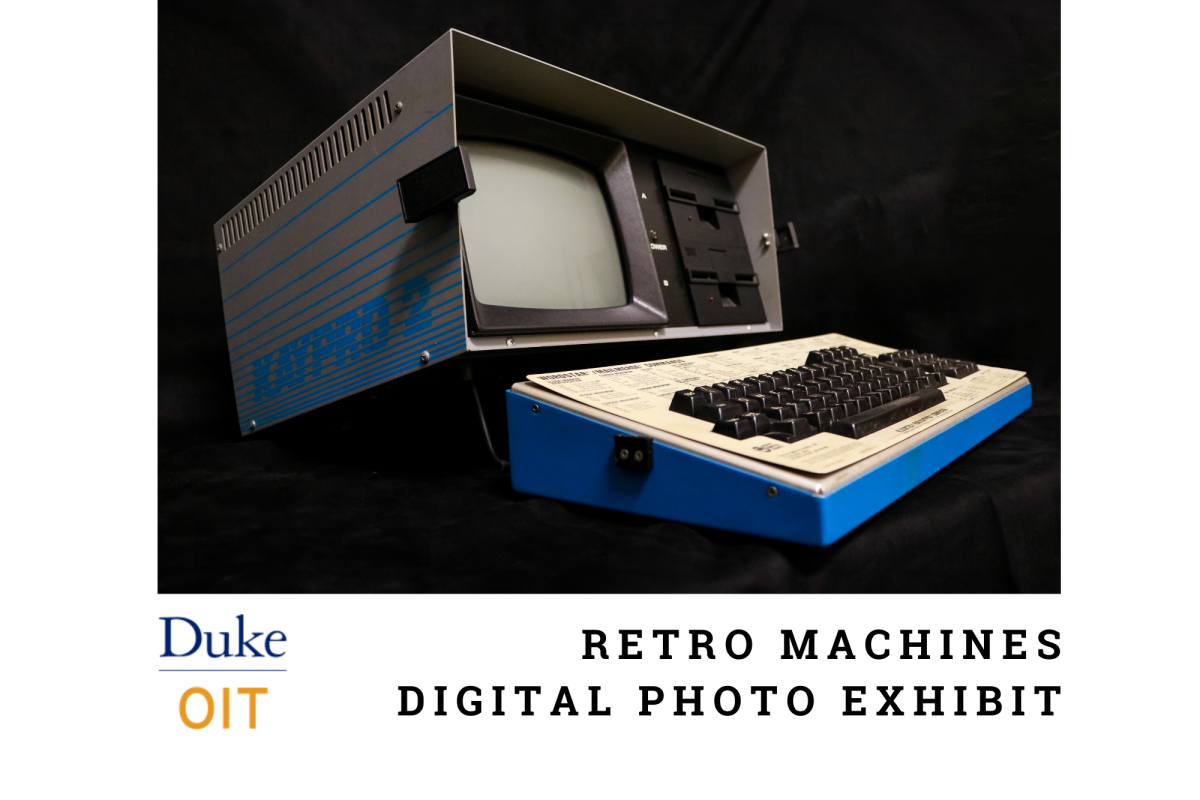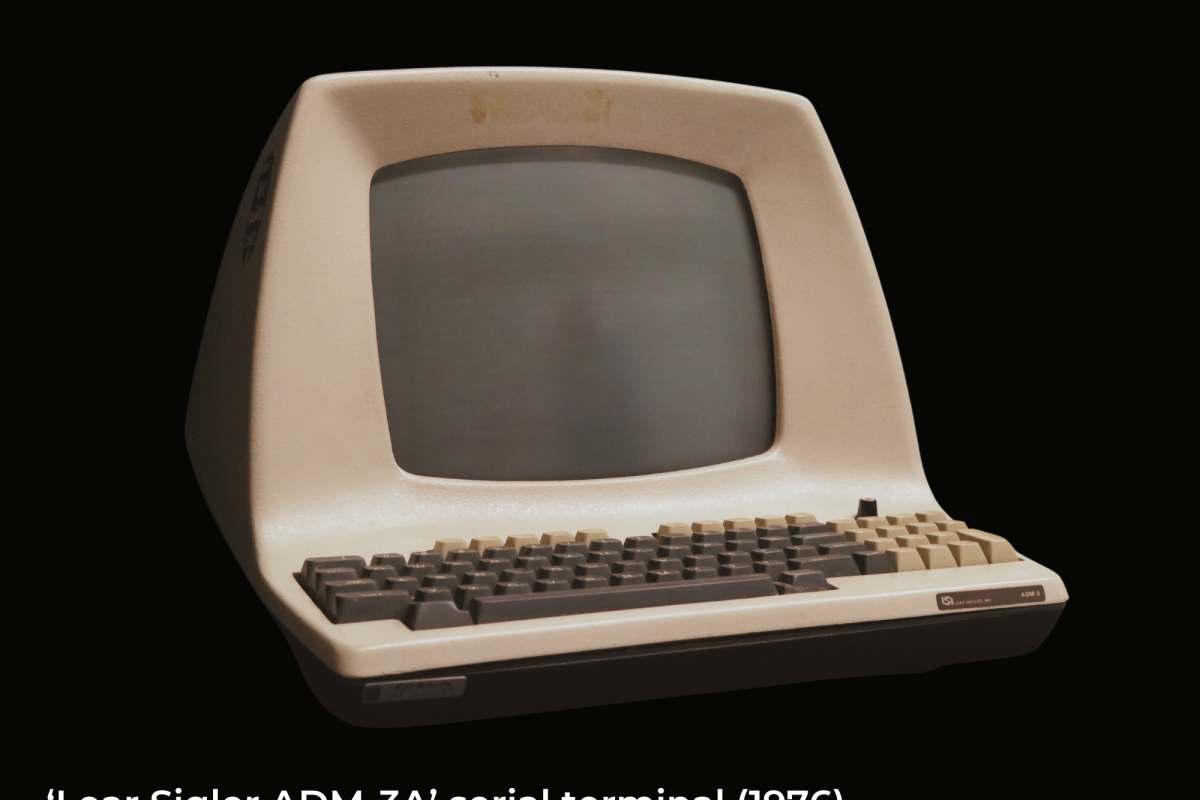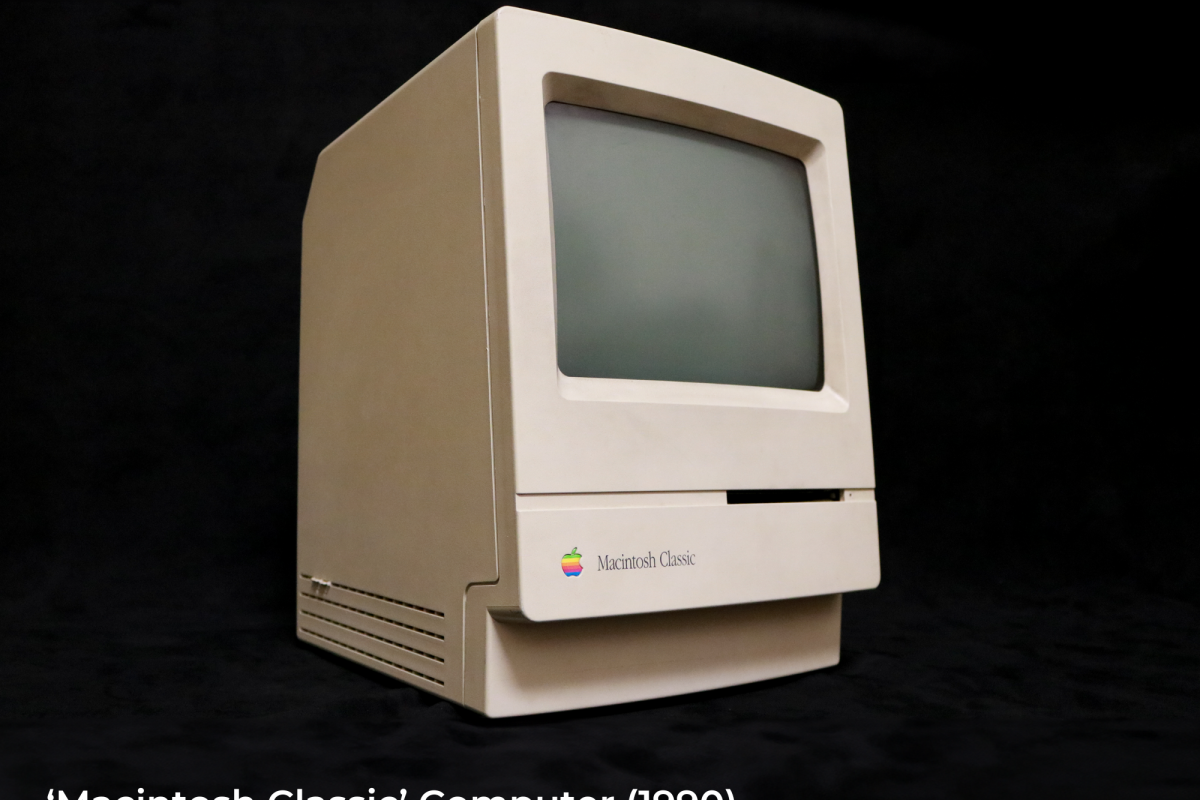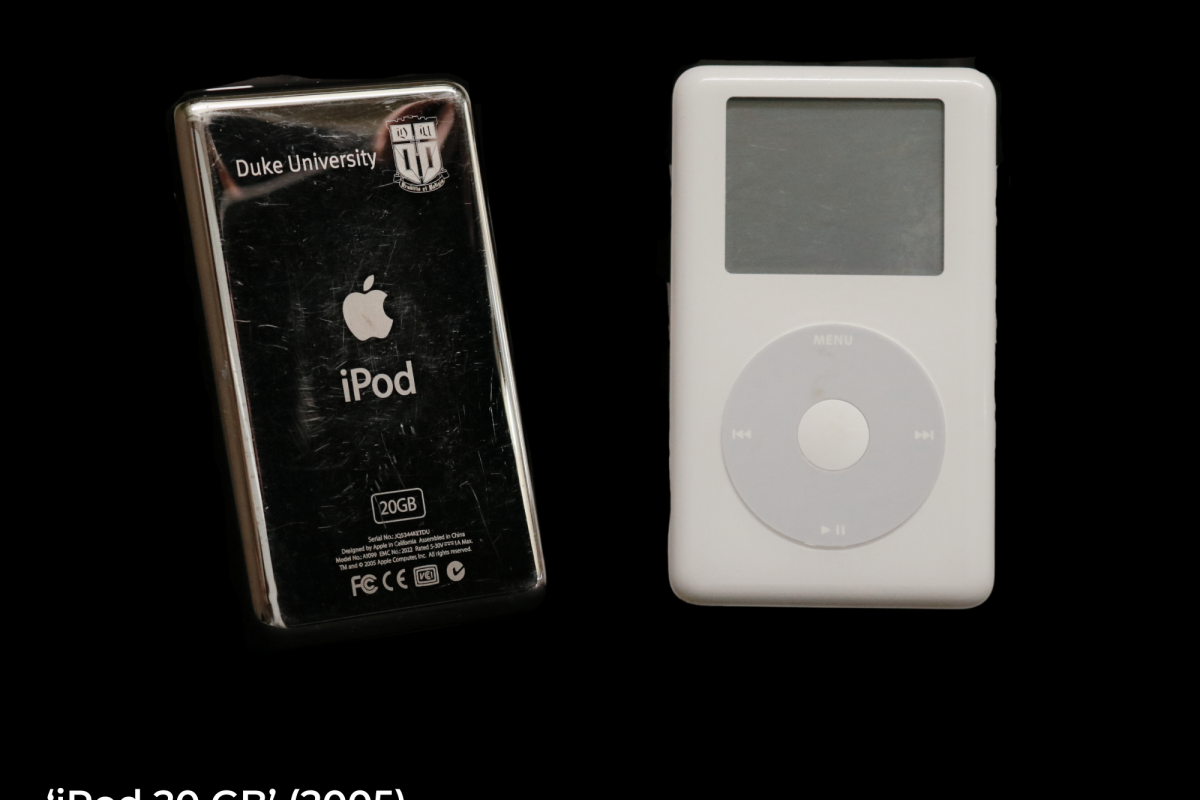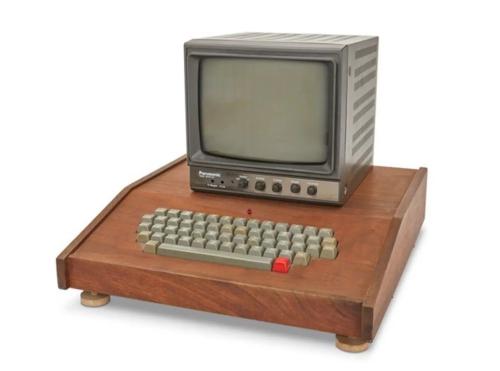
As the university celebrates its 100th year, Duke's Office of Information Technology reflects on the past and prepares for the future.
While exploring OIT’s history at Duke, we researched and photographed an assortment of devices/machines from various locations at Duke and in OIT employees’ personal collections that remind us how quickly technology has advanced. These were items once at the cutting edge, having their moment before something faster, better, and smaller came along.
Some items, like the Lear Sigler ADM-3A serial terminal, Sharp Sync tape recorder, and the Kaypro II with its convenient carrying case, were used in dorms and classrooms by the technologically inclined in the late ‘70s and early ‘80s, long before OIT and computing labs.
Duke was one of the few campuses to claim the NeXT computer system of 1988. Rob Carter, a Duke alum and currently the Middleware Architect in the Office of Information Technology, attended a “lavish, invitation-only” event in San Francisco where the NeXT, the first computing workstation of its kind, was introduced. A former Apple employee and NeXT founder, Steve Jobs, was the keynote speaker.
“It was very cool,” says Carter, who was responsible for bringing the machine back to Duke. Although the computing system was targeted at the higher education market, the $6,500 price tag was too steep for students, and the hardware didn’t quite match up to the higher-end competition. The NeXT computing system fell to competitors like the Macintosh (on the lower end) and the DEC VAXstation (on the higher end). It was soon outdated, but Carter has retained the NeXT’s software on a magneto-optical disk as a reminder.
Duke forged a partnership with Apple early on, and the boxy Macintosh Classic was one of the first machines used in Duke’s computing labs. Those who remember the 1990s will recognize floppy disks, PDAs, and the first landline phones with buttons instead of a rotary dial. Telecommunications was quickly advancing beyond landlines. We could not find an actual pager from those days but from the archives, we understand those devices were more commonly used across campus, not just in the hospital.
The 2000s brought us color and sound, with forward-facing speakers - see the blue Apple iMac G3, also once used in Duke’s computer labs, and more portability - see the powerful and self-cooling Power Mac G4 Cube. The extremely portable 2005 iPod, with 20 GB, and customized with the Duke logo for nearly 1,600 entering first-year students, was meant to encourage creative use of technology. Did the experiment succeed? The Center of Instructional Technology, now called Learning Innovation and Lifetime Education, evaluated and reported the findings.
A couple of contributions to the digital exhibit are relics now found in the Innovation Co-Lab or on East Campus. The self-contained Ultimaker II and the Printrbot, each released in the early 2010s, were early options for 3D printing before the Innovation Co-Lab at the TEC opened its doors in 2016.
Thanks to all in OIT and at Duke who contributed to the exhibit! Looking back on these retro machines, we look forward to seeing the next technological advancements at Duke in the years to come.
What should I do with my old computer?
You can recycle or donate your old machine. If it was purchased with Duke funds, visit Duke’s Surplus and Storage Program and be sure to review the guide on how to surplus items before completing an online form. The program will schedule a time for you to drop it off, or they can pick it up for a fee. Learn more at https://finance.duke.edu/procurement/surplus.
Is it worth it to keep old computers and other outdated technology?
Maybe. Old PCs can make great companions in ways you'd never use a new computer.
When is a laptop old?
By the time a laptop is 10 to 12 years old, the hardware will no longer be supported by modern operating systems, so you'll need to replace the system to keep current with security updates and to be compatible with modern software. (Business Insider)
What is the most valuable vintage computer?

The first Apple-1 computers were sold for $666.66 in 1976. Today, a still-functioning original Apple I in a custom Byte Shop wood case with an include Sony TV display monitor, sold for $400,000. (NPR)
Did You KNow?
There have only been two people to lead the Office of Information Technology, and both have been women—Betty (Le Compagnon) Leydon as Vice Provost for Information Technology and Tracy Futhey as Vice President of Information Technology and Chief Information Officer.
Source: Oct. 27, 1994 memo to faculty and staff from Betty (Le Compagnon) Leydon regarding the Office of Information Technology.
Futhey, Tracy. “Tracy Futhey: Vice President for Information Technology and Chief Information Officer.” Duke University. [Online]. Available: https://duke.edu/about/leadership/futhey/.
The Office of Information Technology was officially formed on October 27, 1994 from six separate units (Business and Finance Data Processing; Computer ASSIST Center; Duke University Computation Center; Management Information Services; Network Communications; and Duke University Telecommunications).
Source: Oct. 27, 1994 memo to faculty and staff from Betty (Le Compagnon) Leydon regarding the Office of Information Technology.
The Office of Information Technology has been led by Tracy Futhey, Vice President of Information Technology and Chief Information Officer, since she joined Duke in 2002.
Source: Futhey, Tracy. “Tracy Futhey: Vice President for Information Technology and Chief Information Officer.” Duke University.
The first issue of The Glove Box News, a newsletter produced by the Office of Information Technology, was distributed to about 20,000 members of the Duke community in December 1994. It offered a range of relevant news and tips to students such as ways to protect against laptop theft, PC security tips, campus email updates, verification of calling cards, and more.
Source: OIT 1994-1995 Annual Report
An average of 1.8 million emails and 2,250 Teams Chat messages are sent and received at Duke each day. Email arrived at Duke in full force when it became available to every student for the first time in August 1994.
Source: OIT 1994-1995 Annual Report; Office of Information Technology Systems Administration
1,599 first-year students at Duke in 2004, received a 20 GB iPod. These iPods came preloaded with Duke content and were given to students as part of the Duke iPod First-Year Experience.
Source: “iPods and Academia: The Duke First-Year Experience,” Powerpoint presentation, Educause, May 17, 2005
In 2023, the Office of Information Technology Service Desk completed 121,212 ServiceNow tickets. With a team of 12 Service Desk employees, that’s roughly 10,101 tickets per person.
Source: OIT Human Resources
The Office of Information Technology has installed approximately 175 miles of fiber optic cabling. Fiber optic cables can transmit a vast amount of data over great distances at high speeds with minimal interference and degradation. These fiber cables extend the Duke Fiber Network from main campus to Duke facilities in Durham and throughout the entire region.
Source: OIT Physical Infrastructure and Operations
Since DTech–a program of over 400 undergraduate women studying computer science, engineering, and math/statistics at Duke–started, the number of women graduating from Duke with computer science degrees has increased from 23% to 36%.
Source: Duke Computer Science. “By the Numbers.” Duke Department of Computer Science, 2023, cs.duke.edu/sites/cs.duke.edu/files/documents/dukecs-infographics-2023_0.pdf.
Chelini, Marie Claire. “Pushing Boundaries and Creating History: 50 Years of Computer Science at Duke.” Trinity College of Arts & Sciences," 9 Nov. 2023.
The Information Technology Advisory Committee (ITAC) formed in March 1995 “to advise the Vice Provost on issues of computing, telephony, and other information technology.” The committee now consists of 16 faculty members, three undergraduate students, one graduate student, eight administrators, five steering committee members, nine representatives of Duke schools, and nine members of the Office of Information Technology.
Source: Office of Information Technology 1994-1995 Annual Report
Source: Duke Information Technology Advisory Council. “ITAC Members - Academic Year 2023-24.” [Online]. Available: Information Technology Advisory Council, itac.duke.edu/membership/.

